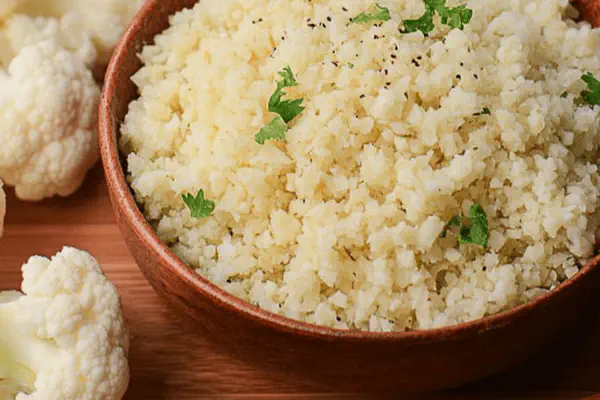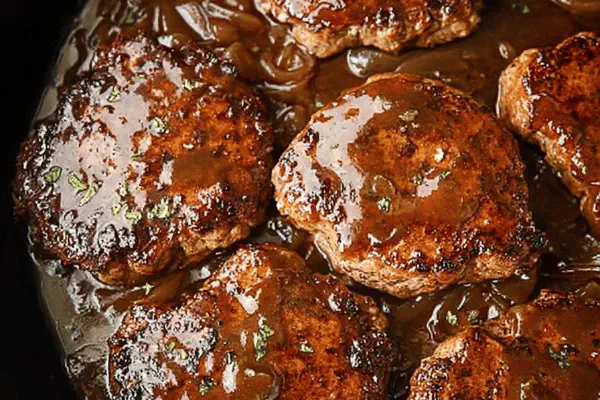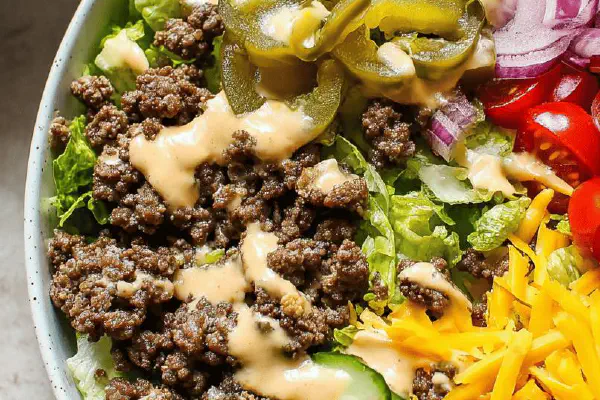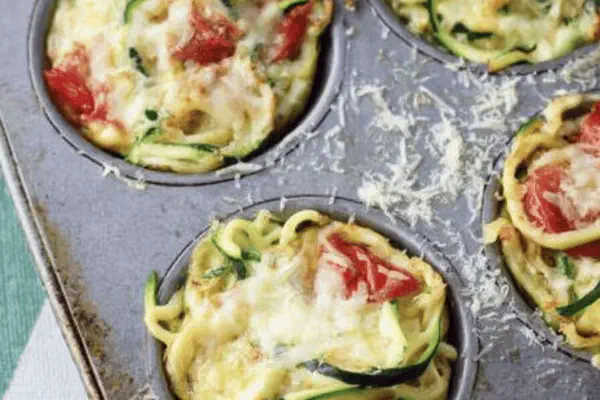Quick Riced Cauliflower

By Emma
Certified Culinary Professional
Ingredients
- 1 medium head cauliflower, trimmed of brown spots and chopped into 1.5-2 inch pieces
- 1 1/2 tablespoons olive oil (or toasted sesame oil as twist)
- 1/2 teaspoon kosher salt
- 1/4 teaspoon freshly ground black pepper
- Fresh lemon juice to spritz
- Chopped fresh parsley for garnish (optional)
About the ingredients
Method
To Rice Cauliflower
- Use well-dried cauliflower, any moisture ruins texture—pat down thoroughly or spin dry after washing; a wet processor means mush.
- Cut the cauliflower into chunks about 1 1/2 to 2 inches. Avoid tiny pieces upfront; evenly sized chunks pulse better and prevent slushiness.
- Pulse the cauliflower in batches in the food processor. 3 to 4 short bursts, check after each to avoid over-processing. Should look like coarse grains or rice, not puree.
- No processor? A box grater or grater attachment works fine but arm fatigue is real; take breaks.
To Cook Cauliflower Rice
- Heat your chosen oil in a wide skillet over medium heat; wait for it to shimmer but not smoke.
- Add riced cauliflower, sprinkle with salt and pepper. Spread it evenly so it sautés, not steams — do not overcrowd or steam will dominate.
- Listen for a gentle sizzle, smell fresh vegetal aroma turning slightly nutty. Stir or toss occasionally, about 4-5 minutes depending on heat; florets should soften but retain slight bite and separate grains clearly.
- If moisture pools, raise heat a bit to evaporate but watch closely.
- Off heat, spritz with lemon juice for brightness and scatter parsley if you have it.
- Serve warm. Store leftovers tightly sealed in fridge for 2 days max; reheat dry to avoid sogginess.
Cooking tips
Chef's notes
- 💡 Dry cauliflower aggressively before pulsing. Wet florets kill texture. Spin dry or pat down hard; no excuses here. Batches in processor avoid mush—pulse short, check often. Aim for coarse grains; never puree or slush forms. Cauliflower too small means uneven cooking; chunk sizes must be consistent, about 1 1/2 to 2 inches. Skimp on time pulsing, get grains not paste.
- 💡 Oil choice matters—olive oil for traditional, toasted sesame for nuttiness twist. Heat oil in wide pan medium, wait for shimmer, no smoke. Sauté quick, spread cauliflower thin so no steam traps moisture. Overcrowding ruins texture; cook in smaller batches if needed. Listen for gentle sizzle, smell fresh turning slightly toasted. Stop when florets soften but retain bite; avoid mush and browning. Moisture pooling means turn heat up and stir more.
- 💡 Lemon juice only last step. Add early and acid dulls fast, kills brightness. Parsley scattered on end keeps fresh green pop; add before heat and it wilts or turns dark. If parsley missing, cilantro or basil fit well but swap carefully; flavor profiles shift drastically. Salt and pepper basics but personal spice options can change experience entirely. Smoked paprika or garlic powder before cooking adds depth; experiment but keep dryness priority.
- 💡 No food processor? Box grater works but arm tires fast. Breaks needed and patience. Manual grated risk uneven grain size; careful pulse timing replaces. Brown spots get cut before chopping; tough or off flavor but won’t cook out. For frozen cauliflower, thaw fully and squeeze hard or get mushy mess. Texture and dryness beat speed when cooking cauliflower rice. Don’t rush; sensory cues guide best outcome.
- 💡 Storage must be airtight, fridge max two days. Reheat directly in skillet medium heat to dry out condensation. Microwave covered traps moisture, makes soggy texture instantly. Leftovers lose bite fast if stored wet. Freshly cooked is crisp-tender with grainy structure preserved. Watch reheating time, overdo it and texture collapses. Plan portion size ahead or freeze in single servings after drying thoroughly.
Common questions
Why does cauliflower rice get mushy?
Usually too wet cauliflower or over-blending. Pulse quick, stop before paste. Dry completely. Cooking with crowded pan traps steam. Spread thin, raise heat if needed. Moisture kills texture fast.
Can I use frozen cauliflower?
Thaw fully and squeeze out water harshly. Frozen holds more moisture. Not same dry texture fresh provides. Better than nothing but expect softer bite. If mush forms, dry more before cooking.
How to know when cauliflower rice is done?
Gentle sizzle sound, no steam bursts. Florets soften but hold shape. Slightly translucent, no brown spots from sauté. Smell fresh with subtle nuttiness. Taste for slight crunch still present.
Best way to store leftovers?
Airtight container in fridge max 2 days. Reheat in skillet medium heat, spread thin to dry out. Avoid microwave on lid; traps moisture and sogs rice. Can freeze if fully cooled and dried but texture less firm after thaw.



